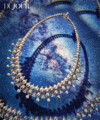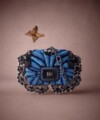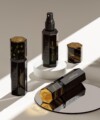While much of wedding planning today is grounded in tradition, there are plenty of evolving customs, especially when it comes to engagement ring shopping. Some of the notions that couples might assume are the standard have changed to include a bit more wiggle room. Kathryn Money, Brilliant Earth’s style expert and VP of Strategy and Merchandising let us in on the traditions (or just straight up falsities) that modern couples could follow, but don’t really have to. From the size and cost to which stone you choose, Money gives us her expert opinion on today’s engagement ring standards and what traditions you can forgo. Keep reading to find out which myths have been debunked.

Courtesy of @brilliantearth
1. Myth: Engagement rings have to cost three month’s salary.
Fact: Today, most couples are more realistic when it comes to their expectations for engagement rings. With the rising cost of real estate, travel, weddings and other expenses, engagement rings are just one of many significant steps in starting a life together. Couples are opting for a ring that fits their personal budget.
2. Myth: Lab diamonds aren’t real diamonds.
Fact: Lab diamonds are made of the same material and have the same optical and chemical properties as natural diamonds, including the same sparkle, fire and scintillation. They are grown in highly controlled laboratory environments using advanced technological processes that duplicate the conditions under which diamonds naturally develop when they form in the mantle, beneath the Earth’s crust. Consumers are increasingly drawn to lab created diamonds as they are a beautiful, affordable and responsible alternative to natural diamonds. Lab diamonds offer high quality and purity, as well as strong value. Additionally, they require no mining, making them a perfect eco-friendly choice.
3. Myth: Diamonds are the only way to go.
Fact: While tradition might tell consumers that diamonds are the only way to go for engagement rings, gemstones like sapphires, aquamarine and morganite make great alternatives that speak to your partner’s personal style.
4. Myth: Engagement rings are only for women.
Fact: According to a recent Brilliant Earth survey, there’s been a 56% increase in men searching for male engagement rings since 2007. With celebrities like Ed Sheeran and Karamo Brown showing off their engagement rings, expect this trend to stay on the rise.
5. Myth: The bigger the ring, the better.
Fact: While some men and women think that bigger is better, there are many factors to consider in an engagement ring. Look for characteristics that speak to overall quality, like the cut, color and clarity of the diamond or gemstone. Shoppers should also be aware of what type of ring would look best on their partner’s hand size or finger shape.
Main image: Courtesy of @brilliantearth







































